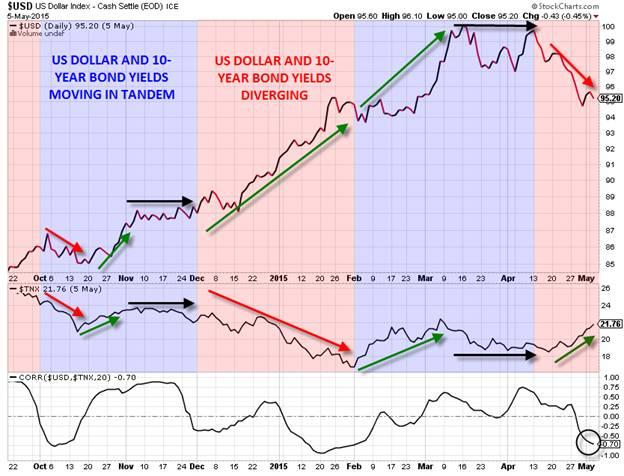![]()
Inspector Gregory: "Is there any point to which you would wish to draw my attention?"
Sherlock Holmes: "To the curious incident of the dog in the night-time."
Gregory: "The dog did nothing in the night-time."
Holmes: "That was the curious incident"
In Sir Arthur Conan Doyle’s “Silver Blaze,” the famous fictional detective Sherlock Holmes investigates the case of a missing race horse and the murder of its trainer. With his trademark insight and perspective, Holmes realizes that the horse’s guard dog did not wake up the owner, providing a strong clue; in his own words, Holmes explains, “I had grasped the significance of the silence of the dog, for one true inference invariably suggests others....Obviously the midnight visitor was someone whom the dog knew well.” In the end, the detective pins the caper on the trainer himself, who was killed when trying to injure the horse so that he could make money wagering against the stallion in upcoming races. The main thrust of the story is that the lack of a usual reaction (the dog barking) is often a valuable signal in and of itself.
I’m reminded of the curious incident of the dog in the night-time when looking at the relationship between the US dollar and US yields over the last couple of weeks. Contrary to the “usual” relationship, where rising 10-year treasury yields prompted traders to drive the US dollar up in tandem, the greenback has actually been falling sharply over the last three weeks, despite rising yields. Just like the dog’s failure to bark at the “intruder” provided valuable information, the breakdown of the positive relationship between US yields and the US dollar signals an important change in the “character” of the world’s reserve currency.
Throughout February and March, the US economy was seen as the “Best House in a Bad Global Economic Neighborhood,” so both the dollar and US treasury bonds attracted capital in tandem. Now that the extent of the Q1 slowdown in the economy is becoming clear though, traders are questioning whether the US could decouple from the slowing global economy, with negative implications for USD. At the same time, Fed officials seem hell-bent on raising interest rates in the September-December timeframe, despite their claims of being data-dependent, and traders are selling treasury bonds in anticipation of this seeming-inevitable increase.
As a bit of background, it’s important to note that short-term correlation between the US dollar and 10-year bond yields is constantly fluctuating: they moved in tandem in October and November of last year, diverged sharply in December and January, resumed their positive relationship in February and March, and are now moving inversely once again. For the more quantitative readers, the 20-day rolling correlation between the dollar index and the 10-year bond yield (TNX) has fluctuated between +0.9 and -0.9, and is currently at -0.7 (see chart below)
So what’s the upshot of this divergence? In the near term, it suggests that traders are not focusing on yields as the primary driver of currency values. Instead, they are trying to “get in on the ground floor” on countries and currencies with improving economic fundamentals. Beyond the bearish dollar impact, this also suggests that currencies with relatively high yields but deteriorating economic performance, like the New Zealand dollar, could come under pressure in the coming days and weeks.
As always, it’s crucial for traders to monitor this key intermarket relationship and remain flexible in case the dog starts barking again.
Source: Stockcharts.com & FOREX.com. Note that this chart reflects yesterday’s prices; current levels as of writing are 94.17 for the dollar index and 2.24% in the 10-year bond.
Information on these pages contains forward-looking statements that involve risks and uncertainties. Markets and instruments profiled on this page are for informational purposes only and should not in any way come across as a recommendation to buy or sell in these assets. You should do your own thorough research before making any investment decisions. FXStreet does not in any way guarantee that this information is free from mistakes, errors, or material misstatements. It also does not guarantee that this information is of a timely nature. Investing in Open Markets involves a great deal of risk, including the loss of all or a portion of your investment, as well as emotional distress. All risks, losses and costs associated with investing, including total loss of principal, are your responsibility. The views and opinions expressed in this article are those of the authors and do not necessarily reflect the official policy or position of FXStreet nor its advertisers. The author will not be held responsible for information that is found at the end of links posted on this page.
If not otherwise explicitly mentioned in the body of the article, at the time of writing, the author has no position in any stock mentioned in this article and no business relationship with any company mentioned. The author has not received compensation for writing this article, other than from FXStreet.
FXStreet and the author do not provide personalized recommendations. The author makes no representations as to the accuracy, completeness, or suitability of this information. FXStreet and the author will not be liable for any errors, omissions or any losses, injuries or damages arising from this information and its display or use. Errors and omissions excepted.
The author and FXStreet are not registered investment advisors and nothing in this article is intended to be investment advice.
Recommended Content
Editors’ Picks
EUR/USD advances to near 1.0750 as risk appetite regains balance

EUR/USD extends its winning streak for the third successful day, trading around 1.0730 during the Asian session on Friday. The risk-sensitive currencies like the Euro gain ground as risk appetite regains balance ahead of US Nonfarm Payrolls.
GBP/USD trades on a stronger note 1.2530, all eyes on US NFP data

The GBP/USD pair trades on a stronger note around 1.2540 amid the softer US Dollar on Friday. The US Federal Reserve Chair Jerome Powell delivered a modest dovish message after the meeting on Wednesday, which weighs on the Greenback.
Gold lacks firm near-term direction, remains stuck in a range ahead of US NFP

Gold price struggles to gain any meaningful traction amid mixed fundamental cues. The Fed’s less hawkish outlook drags the USD to a multi-week low and lends support. Bets for a delayed Fed rate cut and a positive risk tone cap gains ahead of the US NFP.
Solana price pumps 7% as SOL-based POPCAT hits new ATH

Solana price is the biggest gainer among the crypto top 10, with nearly 10% in gains. The surge is ascribed to the growing popularity of projects launched atop the SOL blockchain, which have overtime posted remarkable success.
US NFP Forecast: Nonfarm Payrolls gains expected to cool in April

The United States Employment report will be released by the Bureau of Labor Statistics at 12:30 GMT. The US Dollar looks to employment data after the Fed signaled its intention to hold rates higher for longer on Wednesday.
